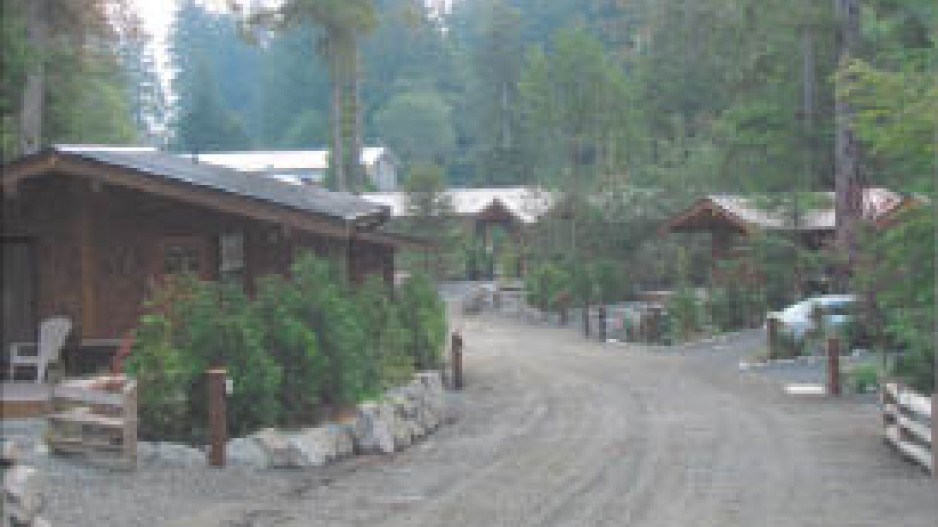Port of call
Three Point Properties Ltd. of Victoria is proceeding with Wild Coast Cottages in Port Renfrew, a project initially launched in 2008 with the vision of offering affordable vacation home sites on par with Tofino but within a two-hour drive of Victoria.
Unfortunately, site servicing costs and the financial meltdown of late 2008 nixed the original plans. The vision of “two-, three- and four-bedroom cottages ranging in size from 1,180 to 1,900 square feet” on lots starting at 5,000 square feet have given way to one-bedroom microcottages averaging 400 square feet. Developed on a portion of the 430 acres of land Three Point owns above Port San Juan, the inlet off the Strait of Juan de Fuca where Port Renfrew lies, the Wild Coast development has attracted 43 buyers since relaunching late last year. A selling point is the price: Unlike the original properties, which started at $299,000 for a lot and house, prices at the new project began at $149,900 (including HST). The lower pricing is possible thanks to the site following the layout of a former RV park and the prefabrication of the cottages themselves in Sooke by Westco Construction Ltd.
Westco manufactures wall segments for various residential projects on Vancouver Island and counts Bear Mountain among its clients. Its cottages are also ideal for laneway homes (“garden suites” in the local terminology).
A site visit last week acquainted travel and business media (including yours truly) with the cottages and all Port Renfrew has to offer – including a host of sport fishing, ecotourism offerings and the company of colourful locals (more than a few of which noted that severe winters militate against Port Renfrew achieving year-round destination status, unless you’re into high surf). The cottages themselves were pleasant enough for a weekend getaway and have drawn several buyers from Alberta (some of whom were enjoying their purchases last week).
Sales at Three Point’s project is mirrored elsewhere, according to Westco owner Dan Melville, a 30-year-old entrepreneur who noted that this summer has been twice as busy as last year. The sales activity is a good sign in a market where tourism has generally been sluggish this year, with Alberta traffic offsetting a decline in U.S. visitors.
Infrastructure issues
Delta presented its draft agricultural plan at an open house that attracted just over 40 people last week, and the document sparked conversation regarding funding for Lower Mainland’s infrastructure – specifically, infrastructure related to agricultural land uses.
Darrell Zbeetnoff of Zbeetnoff Agro-Environmental Consulting, who Delta council charged with drafting the plan in conjunction with Quadra Planning Consultants and Delta staff, framed the document as looking ahead at the implications for agriculture through 2050 (coincidentally, the same date on which the B.C. chapter of the Urban Land Institute is focusing its ongoing discussion series regarding urban issues).
“We have economically viable agriculture because we have efficient agriculture and because we have the infrastructure [for agriculture] to be able to perform efficiently,” Zbeetnoff explained.
Delta farms are productive enough to account for 26% of Metro Vancouver’s farm cash receipts and approximately 7.9% of the provincial tally.
Zbeetnoff said roads, irrigation and water systems and distribution networks for energy are all factors in the success of local agriculture. He was largely preaching to the choir, given the number of farmers in attendance.
But during the question-and-answer period that followed, Jack Bates – a veteran local farmer and current president of the Canadian Horticultural Council – offered one of the most startling suggestions of the night. Sizing up the benefits to the Lower Mainland of Delta agriculture – everything from greenhouse production to potatoes and berries – Bates suggested that regional taxpayers contribute to the upkeep of the infrastructure needed to feed themselves.
“It’s probably a fair number that the taxpayers of Delta put into roads, irrigation, water,” he said. “I know there’s some charges on our taxes, but I think the households of Greater Vancouver and the whole [Fraser] Valley should be paying something to put food on their tables.”
Solar study
Thirteen months ago, this column mentioned that Okanagan College was one of several B.C. schools participating in the “Living Building Challenge” spearheaded by the Seattle-based International Living Building Institute (ILBI) and the Cascadia Green Building Council.
A pair of press releases issued last week trumpeted the fact that the school’s $28 million Centre of Excellence in Sustainable Building Technologies and Renewable Energy Conservation in Penticton has opened with power generated by the largest photovoltaic solar panel array in Western Canada. The 260-kilowatt facility, installed by Calgary-based SkyFire Energy Inc., incorporates more than 1,100 235-watt modules and will generate 292,500 kWh annually (enough to power approximately 292 homes for a year).
Certification of having achieved “Living Building” status won’t occur until at least 12 months after occupancy, when ILBI auditors can check operations records and verify that the centre has met its performance goals.
In the meantime, the system will not only generate power but also provide apprentice and entry-level electricians studying at the centre first-hand experience with solar-generating systems, including their functioning as part of a building and as part of the broader power grid. •




